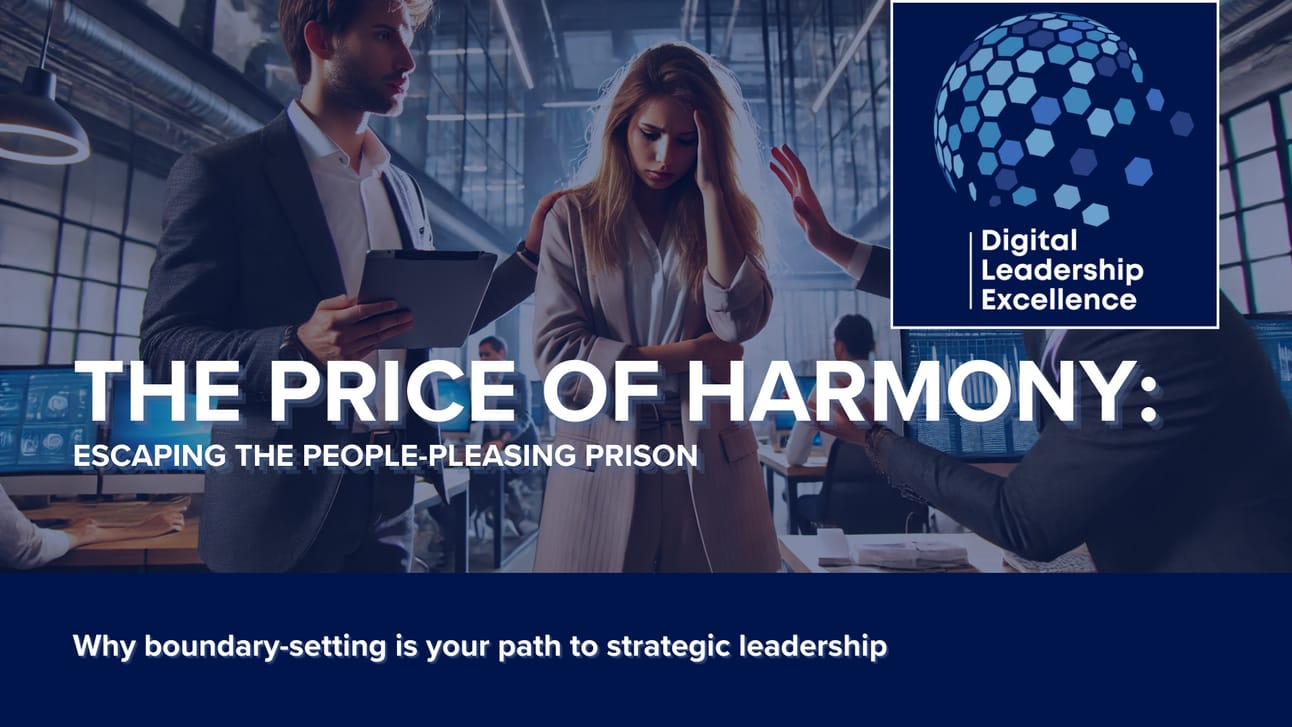Greetings, and welcome to Digital Leadership Excellence—your trusted weekly guide to excelling in tech leadership, delivering results, and thriving with clarity and purpose. In every issue, we provide insights into winning strategies, growth tactics, and practical solutions, designed to support both current and aspiring technology leaders navigating the ever-evolving digital world.
1.0 Introduction
Let's talk about the elephant in the CIO's office...
That gnawing feeling in your gut when you say "yes" to yet another impossible request. That voice in your head screaming "we can't handle this!" while your mouth forms the words "we'll make it work."
Sound familiar?
You're not alone. And what I'm about to share might just transform how you think about leadership influence forever.
But first, let me tell you about my client.
When I first met him, he was drowning. As CIO of a Fortune 500 company, he had all the technical chops you could want. His team was talented. His technology stack was solid.
But there was one problem that was slowly destroying his effectiveness:
He couldn't say no.

"I've built my whole career on being the guy who makes things happen," he told me. "The moment I start saying no, I'll lose my seat at the table."
His calendar was a nightmare of competing priorities. His team was burning out. And worst of all? Despite saying yes to everything, his influence was actually DECREASING.
Why? Because in trying to please everyone, he was actually serving no one effectively.
But here's where it gets interesting...
When we dug deeper, we discovered something fascinating about the psychology behind his people-pleasing pattern. It wasn't really about being nice at all.
It was about CONTROL.
See, he had developed an unconscious belief that if he could just keep everyone happy, he could control outcomes. Keep relationships smooth. Maintain his influence.
But here's the brutal truth about influence in technology leadership:
Real influence isn't built on harmony. It's built on TRUST.
And trust? That comes from something entirely different than saying yes.
2.0 Establishing Strategic Partnerships
Let me show you the exact framework that transformed this executive’s leadership approach and doubled his strategic influence in just 90 days.
This protocol for establishing strategic partnerships has three core components:
2.1 Clarity First
We had to get crystal clear on what mattered most. This CIO worked with his team to identify:
Core strategic initiatives that couldn't be compromised
Current team capacity and constraints
Technical debt implications of various decisions
Real resource trade-offs
This wasn't just about gathering data. It was about creating a solid foundation for every conversation.
2.2 The Partnership Pivot
Instead of seeing requests as yes/no decisions, he learned to pivot every conversation toward partnership.
Here's the exact language he used:
"I'm committed to helping you achieve [specific business outcome]. That's exactly why we need to have a strategic conversation about [trade-off/constraint/concern]."
This simple shift changed everything. Why? Because it
Affirms shared goals
Signals strategic thinking
Opens honest dialogue
Maintains relationships while setting boundaries
2.3 The Visibility Amplifier
This was the game-changer. He started making trade-offs visible in a way that transformed the conversation.

3.0 Raising Visibility
For every significant request, he brought three critical pieces of data to the table:
Current State Snapshot
Team capacity utilization
Active strategic initiatives
Technical debt metrics
Resource allocation
Impact Analysis
Required resource shifts
Strategic initiative impacts
Technical risk assessment
Timeline implications
Alternative Scenarios
Different execution options
Resource trade-off possibilities
Timeline flexibility options
Risk mitigation strategies

4.0 Breakthrough
But here's the CRUCIAL part...
He didn't use this data to say "no." He used it to transform the conversation into true strategic partnership.
Let me show you exactly how this played out in a real situation...
When the Sales VP came asking for a major CRM customization that would have derailed a critical infrastructure project, instead of his usual "we'll figure it out," He responded differently:
"I'm excited about the potential revenue impact of this CRM enhancement. Let me show you how we can partner to make this successful."
Then he pulled out his impact analysis.
But instead of just showing constraints, he presented OPTIONS. Each option came with:
Clear timeline implications
Required trade-offs
Risk assessments
Strategic impact evaluation

The result? Something MAGICAL happened...
The Sales VP didn't get frustrated by the constraints. Instead, she became a partner in solving the prioritization puzzle.
They ended up discovering a phased approach that:
Protected critical infrastructure work
Delivered key CRM features faster
Reduced technical risk
Strengthened their working relationship
But the real transformation went deeper...
Within weeks, this CIO noticed a fundamental shift in how business partners engaged with IT:
They started coming earlier in their planning process
They began asking about impacts on other initiatives
They proposed their own trade-off solutions
They became defenders of IT's strategic priorities
The ultimate paradox?
By setting clearer boundaries, he actually INCREASED his influence.
In fact, six months later, he was invited to join the executive leadership team - not because he said yes to everything, but because he had transformed IT from an order-taker into a true strategic partner.
5.0 The Bottom Line
Your influence as a technology leader isn't built on your ability to say yes. It's built on your ability to engage in strategic partnership.
And that requires something that might feel uncomfortable at first:
The courage to be clear about what's possible, what's not, and why.
Ready to transform your own leadership influence?
Start with these three steps:
Document your current state metrics - make the invisible visible
Practice the partnership pivot language
Create your own impact analysis template
Remember: Every time you say yes to maintain harmony, you're saying no to something else.
Make your trade-offs intentional, not accidental.
Your team, your organization, and your leadership impact will thank you for it.



